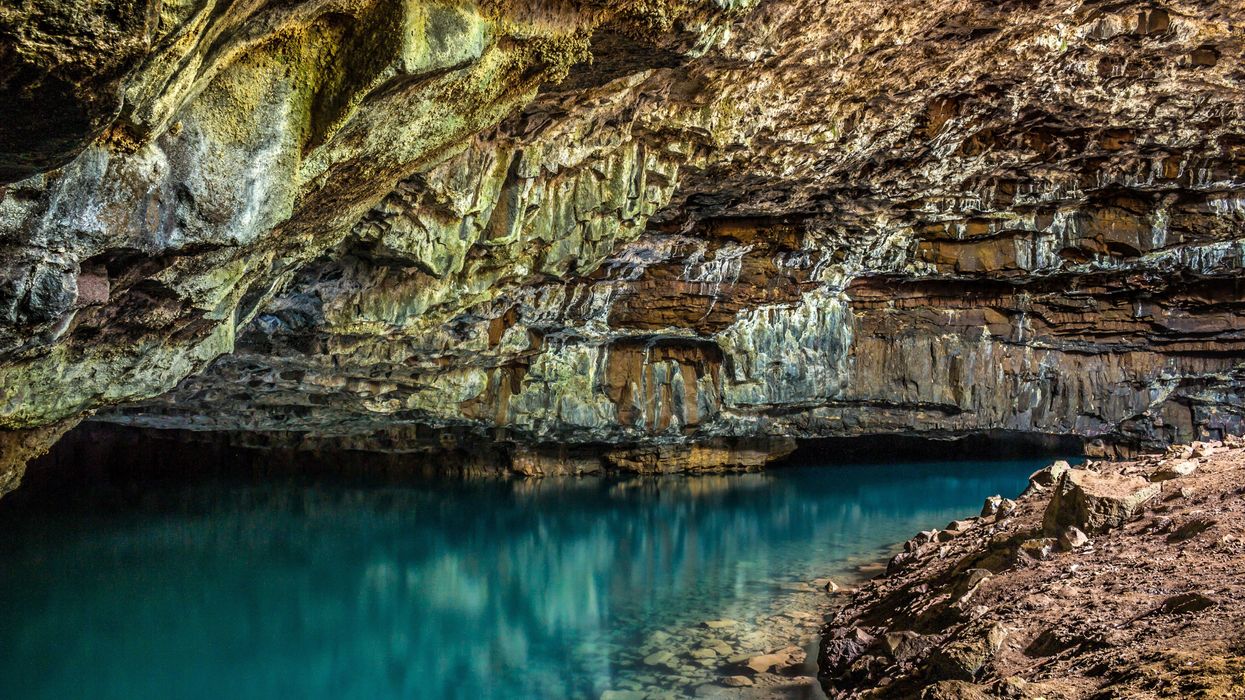Harriet Brewis
Dec 17, 2023

Experts are searching for alternative sources of drinking water deep under ground
(Unsplash)
Scientists have uncovered a potentially life-changing treasure trove hidden off the coast of Italy.
An international team of experts used maps, data and 3D modelling to make the groundbreaking discovery of a vast deposit of ancient freshwater deep beneath the mountains of Sicily.
The body is located some 2,400 metres below sea level, under the Hyblaean Mountains in the southeast of the Island and contains 17.3 cubic kilometres (4.1 cubic miles) of water.
The researchers believe that the water became trapped there some 6 million years ago, but could now offer a much-needed solution to the water shortages currently facing the region.
The Mediterranean Basin, where Sicily lies, is under increased threat from the effects of climate change owing to its already dry climate and risk of coastal flooding.
With the region set to grow increasingly warm and arid over the coming years, concerns are mounting over a potential scarcity of drinking water.
However, the geoscientists and chemists who made the exciting find suggest that the groundwater deposit could help address the pending crisis in southern Italy.
They also believe that such “unconventional sources of potable water” could be explored and possibly exploited elsewhere in the basin.

“The discovery of such an extensive, preserved, and deep-freshened groundwater body has significant implications as an unconventional source of potable water, especially considering the numerous water-scarce areas along the Mediterranean coastlines (e.g., Morocco, Tunisia, Egypt, Lebanon, and Turkey),” the authors wrote in a paper published in the journal Nature.
“Indeed, the geological setting and controlling factors in our study area occur elsewhere in the Mediterranean region, e.g., in the Adriatic Carbonate Platform and the Apulia Platform in Italy, in the Nara Platform in Tunisia, etc where other extensive, deep freshened groundwater bodies may be hosted in carbonate aquifers,” they added.
“The technology to explore and utilize such deep groundwater bodies nowadays exists, making these potentially extensive groundwater resources available for utilization.”
The team of scientists, from the universities of Malta, Roma Tre, and Bologna found the deposit by consulting datasets for oil and gas wells.
They then used this information to build 3D geological and hydrogeological models of the area.

The team posits that the deep Hyblaean aquifer may have something to do with the so-called Messinian salinity crisis – a geological event that lasted some 700,000 years and saw the Mediterranean Basin dry up almost entirely.
This crisis was caused by the closing of the trait of Gibraltar – a narrow water passage that separates Europe from Africa and connects the Atlantic Ocean to the Mediterranean Sea.
It is believed that the crisis ended around 5.33 million years ago when a megaflood suddenly refilled the basin and reconnected it to the Atlantic via the Strait of Gibraltar, as IFL Sciencenotes.
Before the flood, while the basin was still dry, the seabed was exposed, enabling rainwater to trickle down into the crust.
In the case of the Hyblean deposit, this water was likely then soaked by a permeable layer of rock (an aquifer), which soaked it up like a sponge and kept it concealed from the world… until now.
Sign up for our free Indy100 weekly newsletter
Have your say in our news democracy. Click the upvote icon at the top of the page to help raise this article through the indy100 rankings
Top 100
The Conversation (0)













